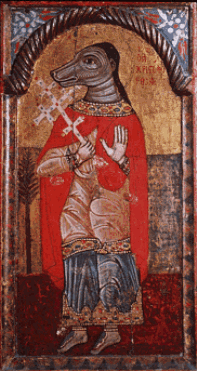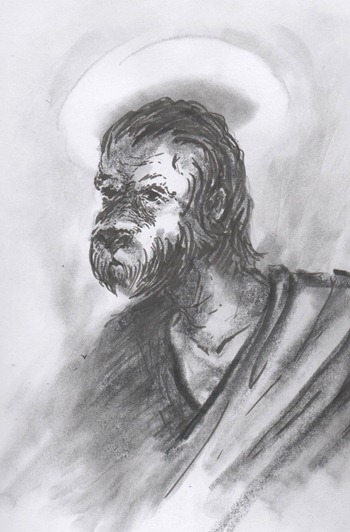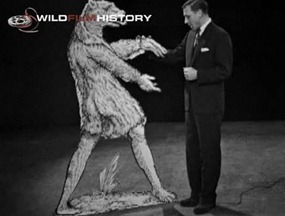Medieval Europeans believed in many strange peoples inhabiting the uncharted lands beyond the edges of their maps. The medieval conception of the world would have been of a charted haven surrounded by boundless strangeness. Living in the far distance were all manner of wonderful civilizations: the one-legged people, the people whose faces looked out of their chests, and the people with the heads of dogs.
It’s impossible to be sure of how these stories originated. No doubt they’re due in part to a fear of the unknown, to medieval man’s sense that Christendom was an island in a sea of heathens and demons. More charitably, it’s possible that explorers simply made up such peoples, knowing full well that their audiences at home would never be able to disprove their claims. Such explorers would have known, too, that often a little bit of fiction makes life more fascinating. There’s also a theory that travellers mistook certain animals for men. In the case of the dog-heads, it’s possible that explorers saw baboons or lemurs and thought they were types of human being. At Wild Film History you can watch David Attenborough talk about the indri…
Wherever he came from, and regardless of whether or not he was actually a lemur, Reprobus was a dog-headed man who converted to Christianity and found his way to the city of Antioch. Upon his conversion he took the name Christopher (now St. Christopher), but swiftly ran into trouble with the dastardly Emperor Decius and his henchman Baceus.
There came a certain Baceus to him and struck him. “You may do so”, said Christopher, “for I will not strike you in return, but I forgive you, for forgiveness is the new law.” 3. Baceus went to the king, and said: “Hail O King, I have news for you. I have seen a man with a dog’s head on him, and long hair, and eyes glittering like the morning star in his head, and his teeth were like the tusks of a wild boar. I struck him for he was cursing the gods; but he did not strike me, and said it was for the sake of God that he refrained.
– from the Irish Passion of St. Christopher, presented by David Woods of University College Cork on his website
 After this episode, Decius summons Reprobus and tries to force him to sacrifice to the gods of the city. When Reprobus refuses, Decius employs hooks, burning lamps and – most feared of all by the church at the time – pretty women, to try to break his resolve. Although Reprobus never made the sacrifice, by the end of the story he has had enough of turning the other cheek. Decius is worn out too, and has Reprobus beheaded, but not before the saint invokes an angel to, ‘give to Decius a devil to compel him to gnaw his own flesh and so die.’ And so, nobody lives happily ever after.
After this episode, Decius summons Reprobus and tries to force him to sacrifice to the gods of the city. When Reprobus refuses, Decius employs hooks, burning lamps and – most feared of all by the church at the time – pretty women, to try to break his resolve. Although Reprobus never made the sacrifice, by the end of the story he has had enough of turning the other cheek. Decius is worn out too, and has Reprobus beheaded, but not before the saint invokes an angel to, ‘give to Decius a devil to compel him to gnaw his own flesh and so die.’ And so, nobody lives happily ever after.
A disclaimer – this is not the version of St. Christopher’s story that most present-day Catholics would recognise. At some point in history, the legends surrounding Christopher and those of the dog-headed people became entangled. Since then the two have been separated, and Reprobus cut loose as an unwanted anomaly of religious history. Perhaps it is fitting, after all. The name Reprobus translates as Outcast.


